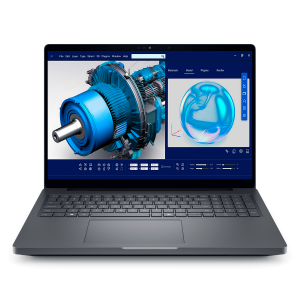Does the Surface Pro Have Enough Cloud Power to Retake the Enterprise?
![]()
Microsoft CEO Steve Ballmer put forth the idea that Microsoft has always heeded the direction of what companies want more than individuals, but with BYOD in full swing, Microsoft is listening to the public with the release of the Surface Pro hybrid tablet. Gone are the days were CIOs are the only people making decisions as to what devices are used for work purposes. The iPad has completely revolutionized the device make-up of any corporate office, and it’s powered by a broadening cloud, complete with enterprise-ready applications that let end users remain productive in the office, at home and everywhere in between.
Until now, Microsoft tended to better monetize its business relationships. But the past five years have initiated an irreversible shift towards cloud computing, an industry set to overrun much of Microsoft’s territory. The Redmond software maker has had trouble keeping up with the latest cloud trends, forced to rethink its product offering and distribution once the PC market took a noticeable turn for the worse.
.
Too pricy, not enough apps
.
We cannot currently consider the Microsoft Surface Pro an Apple iPad killer: by its nature, the Surface Pro is somewhere between an ultrabook and a tablet. But in an effort to truly compete with the likes of Apple or Samsung on the hardware side, Microsoft looks to the accessories to close the deal. The Surface Pro comes with a keyboard and ergonomic case, which is a clear sign that the company has studied and listened to the market. But is this good enough to attract business users and CIOs?
Contrary to the tablet surface RT, which uses an ARM processor technology, the newcomer is based on Intel processors and has a full version of Windows 8 Pro. The 128GB version sells for $999, while the 64GB goes for $899. Despite what many consider to be a high price, few enterprises have implemented Windows 8–either on tablets, phones, or desktops and laptops.
At $499, business might prefer a 16 GB iPad or high end Android devices and get at least 600,000 more available apps. If they want something akin to Office, they can purchase cloud based QuickOffice for about $15, that works perfectly with popular consumer-driven, enterprise-ready cloud services like Dropbox, Box.net, Google Drive, and others. Additionally, other vendors including Logitech keyboard covers selling for $79, versus the $119.99 cost of the Touch Cover Microsoft sells. If you tally it all up, a business user would spend at least $1,028 on the 64 GB model on Surface Pro tablet versus $700 for others. That kind of pricing is quite high in comparison, considering that CIOs are looking for ways to bring down IT cost.
.
Optimizing the hardware/software combo
.
But the advantages of the Pro are that it is a widely focused effort to date to optimize advanced hardware for arguably the most radical update of Windows software yet. The device is intended to set the standard amongst laptop-tablet hybrids.
Many in the enterprise have already made significant investments in creating business logic and data structures on other Windows platforms, so it makes sense to develop and create Windows 8 tablet apps rather than rewriting from scratch for a completely different operating system. Microsoft’s existing presence in the enterprise also works in its favor, appealing to IT administrators on the software side, while wooing consumers with a fresh hardware offering. Despite the slow uptake of Windows 8, Microsoft still has its legacy to monetize, if it can offer a most compelling combination of devices and cloud services.
Of course, the BYOD trend has jump-started a new market all its own, building on the paradigm shift that cloud services must be OS agnostic. So even as Microsoft works to udpate its operating system for the post-PC era in hopes of saving developers from having to create multiple apps for multiple OS’s, there’s a slew of third party platforms designed to minimize the burden of building, distributing and monetizing apps across Windows, iOS, Android and beyond. Apple, Google, Microsoft and BlackBerry are all working on a comprehensive hardware/software solution, but just as in the enterprise, lock-in tactics will become easier to circumvent in a BYOD world.
![]()
.
Ideal for BYOD Solution?
.
To reach to the level of dominance Apple and Google have achieved in just three years, Microsoft has changed its PC strategy to focus on the mobile workforce. At the same time, the company has traditionally appealed to the BYOD crowd and consumers, now the driving force behind device-related decisions for IT departments.
On the downside…
Millions of touch tablet devices are already in the hands of consumers, and many use them in the enterprise thanks to compatable BYOD programs. A large chunk of that figures to go Apple’s iPad and Android based devices. And that means only few developers have written business apps for the Windows 8 platform. It makes more sense for CIOs to roll out touch enabled apps on iOS and Android than it does on Windows 8.
“Developers see the new .Net versions as Java’s equal for complex enterprise and cloud deployment, but they don’t see Microsoft as relevant yet with mobile devices,” said Forrester’s David Johnson.
Other disadvantages include a poor battery life for the Surface Pro. It lasts for four hours compared to the 10-hour battery of an iPad. The device is also too heavy for a tablet, weighing in at 50 percent heavier than an iPad.
On the upside…
But considering Microsoft has a virtual monopoly in the PC industry, it has the ability to leverage long-standing partnerships in the hardware and enterprise spaces to move quickly to produce competing products and applications. Another favorable point is that the Surface Pro runs the full suite of applications that employees need to do their jobs every day, from Windows Office to accounting programs to SalesForce.com.
Another benefit specific to the CIO in not having to incur additional costs for management. If enterprises are running Microsoft Windows Server 2008 or its successor Windows Server 2012, they have the infrastructure in place to establish administrative rights and ownership, providing all enterprises wide securities and policies. And it’s an infrastructure that an IT staff is already trained for, and familiar with. The ease of integration is a perk for IT that aligns well with consumer demand, whichever direction that may go.
As Wikibon’s Scott Lowe noted: “The primary advantage that Microsoft has in this area is the hope that consumers buying a tablet they intend for BYOD are buying a tablet that must support corporate applications without the need for a virtualization layer.”
On the security side, the Surface Pro comes standard with an industry security chip called a Trusted Platform Module that has the technology to enable password-free connectivity to Wi-Fi, the corporate VPN or through Microsoft’s VPN alternative, Direct Access. And it’s actually more secure.
Over the long term, the Surface Pro will only succeed if consumers and IT organizations actually buy and use the device in the field.
“The Surface Pro’s larger size and snap-on keyboard make it easy to spot, so if it’s a big seller, we should start seeing business people carrying them onto airplanes and into conferences within a few months,” noted Carl Howe, Yankee Group’s VP of research.
photo credit: Carnesaurus via photopin cc
A message from John Furrier, co-founder of SiliconANGLE:
Your vote of support is important to us and it helps us keep the content FREE.
One click below supports our mission to provide free, deep, and relevant content.
Join our community on YouTube
Join the community that includes more than 15,000 #CubeAlumni experts, including Amazon.com CEO Andy Jassy, Dell Technologies founder and CEO Michael Dell, Intel CEO Pat Gelsinger, and many more luminaries and experts.
THANK YOU





















